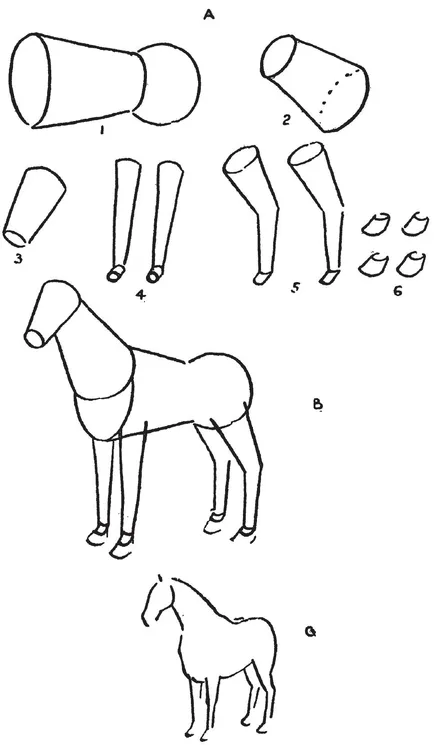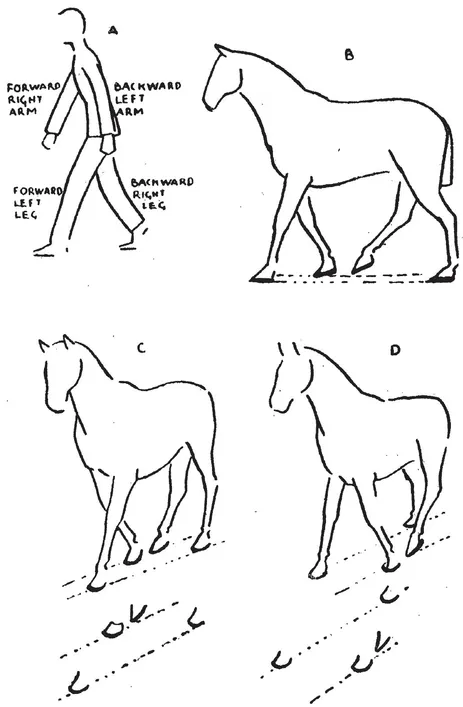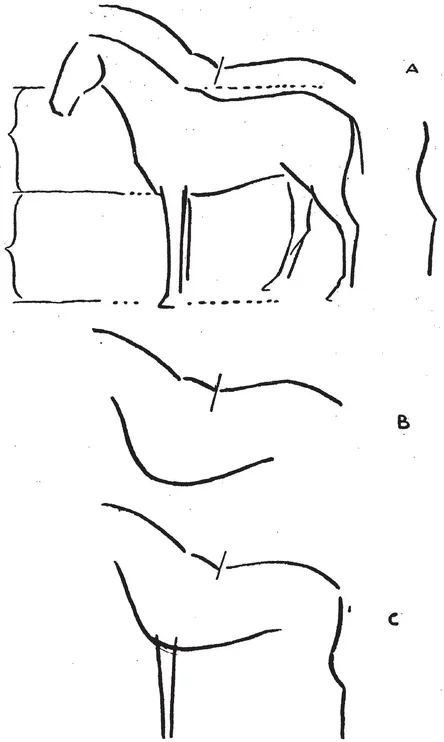
eBook - ePub
Animal Sketching for Beginners
Len A. Doust
This is a test
Partager le livre
- 64 pages
- English
- ePUB (adapté aux mobiles)
- Disponible sur iOS et Android
eBook - ePub
Animal Sketching for Beginners
Len A. Doust
Détails du livre
Aperçu du livre
Table des matières
Citations
À propos de ce livre
This handy manual provides the confidence, insight, and guidance to help any sketcher create realistic animal drawings. With the help of the author's thirty-one clearly detailed drawings, this basic how-to-guide:
• illustrates major attributes shared by many animals
• shows how simple shapes can create complex drawings
• functions as a valuable anatomy reference
A source of inspiration for artists at all levels, this book will be especially helpful to beginning art students.
• illustrates major attributes shared by many animals
• shows how simple shapes can create complex drawings
• functions as a valuable anatomy reference
A source of inspiration for artists at all levels, this book will be especially helpful to beginning art students.
Foire aux questions
Comment puis-je résilier mon abonnement ?
Il vous suffit de vous rendre dans la section compte dans paramètres et de cliquer sur « Résilier l’abonnement ». C’est aussi simple que cela ! Une fois que vous aurez résilié votre abonnement, il restera actif pour le reste de la période pour laquelle vous avez payé. Découvrez-en plus ici.
Puis-je / comment puis-je télécharger des livres ?
Pour le moment, tous nos livres en format ePub adaptés aux mobiles peuvent être téléchargés via l’application. La plupart de nos PDF sont également disponibles en téléchargement et les autres seront téléchargeables très prochainement. Découvrez-en plus ici.
Quelle est la différence entre les formules tarifaires ?
Les deux abonnements vous donnent un accès complet à la bibliothèque et à toutes les fonctionnalités de Perlego. Les seules différences sont les tarifs ainsi que la période d’abonnement : avec l’abonnement annuel, vous économiserez environ 30 % par rapport à 12 mois d’abonnement mensuel.
Qu’est-ce que Perlego ?
Nous sommes un service d’abonnement à des ouvrages universitaires en ligne, où vous pouvez accéder à toute une bibliothèque pour un prix inférieur à celui d’un seul livre par mois. Avec plus d’un million de livres sur plus de 1 000 sujets, nous avons ce qu’il vous faut ! Découvrez-en plus ici.
Prenez-vous en charge la synthèse vocale ?
Recherchez le symbole Écouter sur votre prochain livre pour voir si vous pouvez l’écouter. L’outil Écouter lit le texte à haute voix pour vous, en surlignant le passage qui est en cours de lecture. Vous pouvez le mettre sur pause, l’accélérer ou le ralentir. Découvrez-en plus ici.
Est-ce que Animal Sketching for Beginners est un PDF/ePUB en ligne ?
Oui, vous pouvez accéder à Animal Sketching for Beginners par Len A. Doust en format PDF et/ou ePUB ainsi qu’à d’autres livres populaires dans Arte et Técnicas artísticas. Nous disposons de plus d’un million d’ouvrages à découvrir dans notre catalogue.
Informations
Sujet
ArteSous-sujet
Técnicas artísticasTHE PLATES
PLATE 1.—At Fig. A, I have drawn in their simplest form these shapes. At A,1 you see the body with its two sections, at A,2 the neck, at A,3 the head, at A,4 the fore legs, at A,5 the hind legs, and at A,6 I have added hoofs.
These basic animal shapes are based on the horse in their proportions, one to another. Many people may make a passable drawing of a furry cat or dog where the actual form is hidden and the suggestion of fur needs no great accuracy, but when drawing a horse or any such smooth-coated animal one must have accurate knowledge of its form, or the result is disaster.
Now let us assemble the shapes of Fig. A. The result, as shown at Fig. B, has a close resemblance to the toy horse of the nursery, and you may think the lesson is as childish as the result. I cannot insist, but do implore you to go no farther into this book until you can draw Figs. A and B without reference to this plate. Remember that these toy shapes are not here to teach the drawing of the horse only, but of every four-footed beast. As a slight proof of their utility, I add at Fig. C a very rapid sketch of a horse based on Fig. B.
PLATE 2.—My next plate teaches another primary lesson. You will notice the sketch of a man walking at Fig. A and the writing attached. Check these words with the three sketches of a horse, and you will discover that they agree. Associated with this movement of the legs is the important fact of the leg position. Always remember that the four legs are not all behind one another. This is ably demonstrated by the lines drawn under each horse. Although the simple demonstration of the leg movements of a horse when walking is that of these sketches and the words around the man figure, yet a more careful observation proves that the times of the actual placing of the feet to the ground are not in pairs, but individually and one after the other ; in other words, the order of the taps of a horse’s hoofs are as follows : front right, back left, front left, back right. Bearing this in mind and remembering that each foot is lifted quite considerably between each step, you may easily obtain the approximate relative positions.

PLATE 1

PLATE 2
One other observation may be made from this plate : the simple one that a horse’s feet move along two lines as shown dotted. When we come to a half or full front view of a standing horse, this fact becomes obvious even as it is in Plate 1, Figs. B and C. Never forget the three dimensional outlook, that is to say, never neglect the fact of thickness as well as length and height.
PLATE 3.—We will leave the subject of motion for the time being and return to that of form. Fig. A shows the simplified outline of a horse. The shape appears most complicated even in this simple style. I have no need to remind you, so soon, of Plate 1 ; but I suggest that you lightly divide this Fig. A into the sections of Plate I, Fig. A. Heed the curved lines above the back and beside the hind quarters. Practise these shapes in various sizes up to ten inches. Note the short cross line which cuts the back line in the centre. Fig. B shows the back line and the chest and stomach line. To these are added, in Fig. C, the line of the hind quarters and the fore leg. You observe the faint resemblance to an animal. The head shape and inside of hind leg are easily added.
You will gain, not only a knowledge of proportion, but also an adroit use of your pencil, if you practise this page thoroughly. You may not at this early stage understand what each line represents in actual life, but with these lines firmly fixed in your mind you would, I am sure, make a study of a horse very much more easily and accurately than you would have done just the few minutes before, when you had not studied this apparently unimportant plate. These early plates of simple construction are the vital ones. Copy them, memorise them, draw them reversed, even trace them if you wish. I care not what you do with them so long as they are fixed in your mind. Do not imagine that every line is accurate. I draw these without careful preparation. No matter if the shape is not the shape of a horse, the important thing is the type of lines used and their approximate relations to one another.

PLATE 3
One other point to heed on Plate 3—the proportion lines to the left of Fig. A. As a rule, you may estimate that, in a horse, the depth from withers to base of chest is equal to the length of fore ...